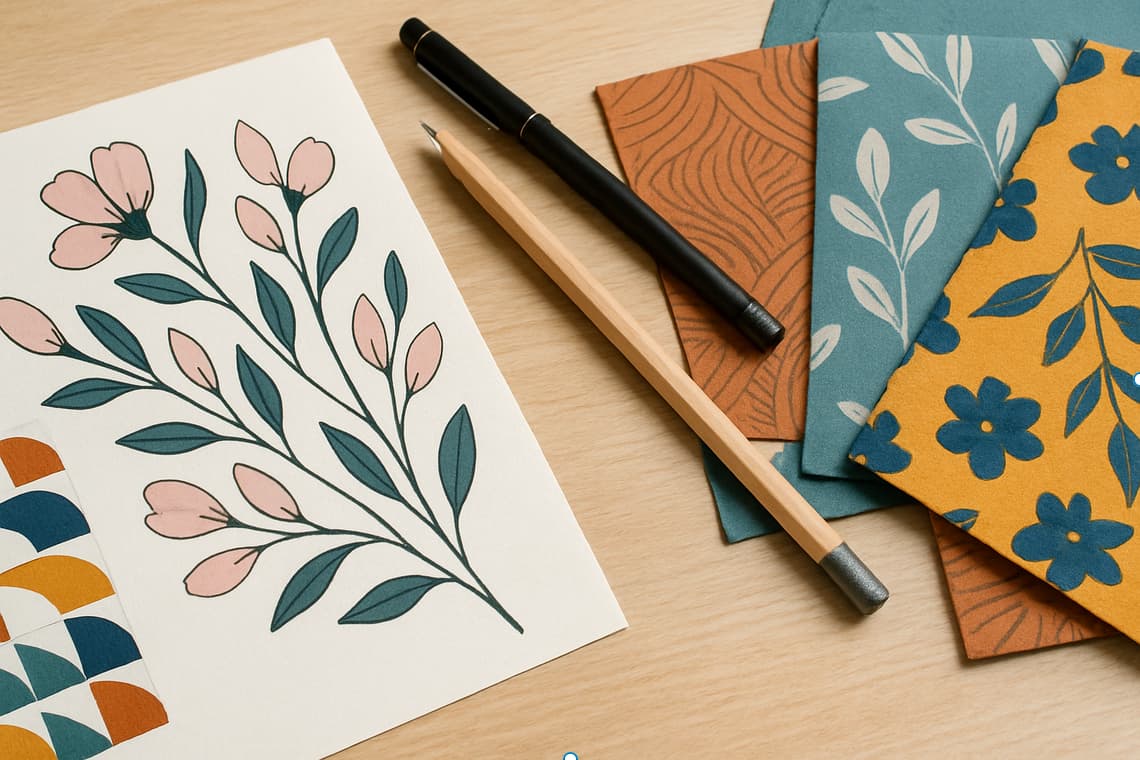Design studios and freelance designers often source pattern-print assets from global suppliers. Whether purchasing surface patterns, textile prints, digital illustrations, or licensing rights, transactions often involve foreign currencies. As international sourcing grows, the financial risks linked to currency fluctuations become more significant.
Without proper management, exchange rate shifts can increase the real cost of pattern-print assets and disrupt project budgets. Working with brokers forex helps design professionals handle currency exposure and stabilize payments when sourcing assets abroad.
Why pattern-print sourcing involves currency risk
Pattern-print assets are used in a wide range of industries, including fashion, home decor, product packaging, and digital media. Designers frequently purchase these assets from markets with strong creative communities:
- Textile designs from Italy or India
- Digital patterns from Japan
- Surface print licenses from the UK or France
- Boutique illustration styles from Eastern Europe
When payments are made in foreign currencies, currency fluctuations affect the real value of the purchase. If the buyer’s home currency weakens against the supplier’s currency between the time of budget approval and payment, costs can rise unexpectedly.
A broker de forex gives designers the tools to mitigate these risks and manage project finances more effectively.
Managing conversion costs
Designers working internationally must convert their home currency into the supplier’s currency. Standard bank conversions often involve hidden fees and poor exchange rates, increasing total costs.
A broker forex provides more competitive rates and transparent pricing structures. This results in direct savings when making payments for pattern-print assets.
In addition, brokers offer greater flexibility in conversion timing. Designers can monitor exchange rates through platforms such as tradingview.com or fxstreet.com and schedule conversions when rates are favorable.
This proactive approach helps preserve budget allocations and maintain profitability on design projects.
Timing payments for cost control
Pattern-print sourcing often follows a staged process:
- Initial license negotiations
- Advance payments for exclusive rights
- Final payments upon delivery of high-resolution files
- Ongoing royalty payments for extended use
Each payment stage involves currency exposure. A broker forex enables designers to plan conversion timing strategically:
- Convert funds shortly before payment deadlines when rates are strong
- Spread conversions across multiple stages to reduce volatility risk
- Lock in rates for larger payments using hedging tools when needed

Platforms such as tradingeconomics.com and thebalancemoney.com provide valuable market data that supports this decision-making.
Hedging large commitments
For large-scale projects, pattern-print assets can represent a significant portion of design costs. This is common in fashion collections, licensed product ranges, or retail collaborations.
When substantial payments are involved, designers can use a broker forex to hedge currency exposure. Hedging techniques such as forward contracts allow them to lock in exchange rates for future payments, eliminating the risk of adverse market movements.
This strategy protects margins and enables more accurate budget forecasting throughout the production cycle.
Supporting global supplier relationships
Using a broker forex also helps strengthen relationships with pattern-print suppliers. Offering to pay in their preferred currency and managing conversion efficiently reduces friction in business transactions.
Suppliers appreciate working with clients who handle payments professionally and respect contractual terms. Reliable currency management helps ensure that payments arrive in full, on time, and without unnecessary deductions due to poor exchange rates or banking fees.
For designers building long-term partnerships with creative suppliers, this contributes to smoother collaborations and better access to premium assets.
Tracking currency trends for creative planning
Broader market awareness also supports better financial planning for international pattern sourcing. Designers can monitor currency trends in key supplier markets using tools such as petroleo trading data, which often correlates with currency movements in resource-driven economies.
By understanding the macroeconomic factors affecting currency trends, designers can:
- Adjust sourcing regions based on currency strength
- Time large purchases to coincide with favorable market conditions
- Budget more accurately for future projects
Simplifying accounting and reporting
Design studios that manage multiple international transactions benefit from the transparency provided by a broker forex. Brokers deliver clear transaction records and conversion reports, which simplify accounting and support tax compliance.
Platforms like Metatrader4 offer reporting features that allow teams to analyze historical conversion performance and identify ways to improve currency management practices.

Accurate records help designers understand the real cost of pattern-print assets, evaluate supplier pricing in different currencies, and refine financial strategies for future projects.
Summary of benefits
Using brokers forex to manage payments for pattern-print assets provides several key advantages:
- Lower conversion costs and improved rate transparency
- Flexibility to time payments strategically
- Ability to hedge currency exposure for large transactions
- Stronger supplier relationships through professional payment practices
- Improved financial planning and project budget stability
- Simplified accounting and reporting for multi-currency sourcing
By applying these practices, design teams can maintain better control over project costs and protect margins when working internationally.
Conclusion
Pattern-print sourcing is an essential component of many creative projects. As designers engage with global suppliers, currency risk becomes a factor that must be managed with care.
Working with brokers forex enables designers to stabilize payments, control conversion costs, and support consistent financial planning across projects. From small freelance purchases to large-scale licensing deals, effective currency management contributes to more sustainable and professional creative operations.
By incorporating forex strategies into their sourcing workflows, designers can focus more fully on the creative process while maintaining financial discipline in today’s global design economy.



